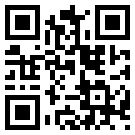Press Releases
ETW is strategic for European aviation RDT&E

In the center LTR: Dr. Soares (EC) and Prof. Henke (DLR) in front of the LN2 rakes of ETW. Hi-Res [2.7MB]. Photo: © DLR.
The availability of excellent Research, Development, and Test and Evaluation (RDT&E) infrastructure is essential to secure a decisive competitive edge for the European Aviation industry, as well as for the aviation-related public research in Europe. Therefore, in September 2012 the European Commission and ACARE had tasked an Independent Expert Group (IEG) to identify, with the help of ERA-Net AirTN, how the EU can play a major role in establishing a European Strategic Aviation RDT&E infrastructure and in securing its sustained availability. The IEG has developed a set of criteria for identifying strategic and key facilities considering research as well as industrial development needs. A strategic infrastructure consists of "strategic RDT&E capabilities", i.e. one or more facilities (hard- and software) including related technologies and highly skilled personnel. Different capabilities were considered, e.g. wind-tunnel testing, engine test, ATM, large-scale demonstrator aircraft, or e-infrastructure capabilities.
Exemplary, the IEG has applying its own criteria to the category wind-tunnel testing. The European Transonic Windtunnel ETW turned out to be one of only 4 European strategic wind tunnels having required unique capabilities. In their final report "Towards a European Strategic Aviation Research, Development, Test & Evaluation Infrastructure" the IEG recommends establishing cooperation between the European Commission, Member States, industry and facility owners to investigate co-funding possibilities for the strategic facilities.
An AirTN-ACARE-EU workshop on "Aeronautics Research & Testing Infrastructures - Key for Europe's Competitiveness in Aviation" was held on 25-26 February 2013 in Brussels, Belgium. Afterwards, Prof. Rolf Henke, Member of the DLR Executive Board, invited the Director of the Transport Research Directorate in European Commission DG RTD, Dr. Manuela Soares, to visit DLR and the strategic wind tunnel ETW. During her visit on 23 July 2013 related European aviation research aspects were discussed.

LTR: Dr. Dietz and EC Director Dr. Soares inspecting an ETW calibration model. Photo: © DLR.
Background
ETW - Pushes the Limits
Wind tunnels, using scaled down aircraft models, are the major source of aerodynamic design data for new aircraft projects. Wind tunnels are indispensable tools for aerodynamic research and aircraft development; they complement and validate flow simulation methods on the most powerful computers.
ETW, the European Transonic Wind Tunnel, was designed and constructed by the four European countries France, Germany, United Kingdom and The Netherlands. It is operated based on a non-profit policy by the ETW GmbH, founded in 1988. Its location in Cologne, Germany, is right in the middle of Europe.
European researchers and engineers harness ETW’s capabilities for advancing aeronautical science into aircraft innovation by accessing real-flight conditions in this cutting edge ground-test laboratory.
ETW is the worldwide leading wind tunnel for testing aircraft at real flight conditions. Aircraft performance and their flight envelope limits can be accurately determined with unique quality at ETW long before flight testing of a first prototype. This enables significant reductions in the technical and economic risks associated with the development of new aircraft. Manufacturers from all over the world take advantage of the exceptional features of this high-tech facility enhancing the performance, economic viability, and environmental friendliness of their future aircraft.
ETW – Erweitert Horizonte
Aerodynamische Entwurfsdaten für neue Flugzeugprojekte werden zu einem großen Teil aus Windkanaluntersuchungen an maßstäblich verkleinerten Flugzeugmodellen gewonnen. Windkanäle sind unverzichtbare Werkzeuge sowohl für die Strömungsforschung als auch für die Flugzeugentwicklung; sie ergänzen und validieren Verfahren zur Strömungssimulation auf modernsten Hochleistungsrechnern.
Der Europäische Transschall-Windkanal ETW ist eine transnationale Forschungseinrichtung in Köln. Er wurde von den vier Staaten Frankreich, Deutschland, Großbritannien und den Niederlanden entwickelt und gebaut. Betrieben wird er von der ETW GmbH, die als eigenständiges Non-Profit-Unternehmen 1988 gegründet wurde.
Der ETW erlaubt europäischen Forschenden und Ingenieur:innen, tatsächliche Flugzustände unter Laborbedingungen am Boden darzustellen, um wissenschaftliche Erkenntnisse zu erarbeiten und in Luftfahrtinnovationen zu überführen.
Der ETW ist der weltweit führende Windkanal, in dem Luftfahrzeuge unter wirklichkeitsgetreuen Flugbedingungen getestet werden können. Lange bevor der erste Prototyp für einen Flugtest zur Verfügung steht, können im ETW die Leistungsfähigkeit und die Flugbereichsgrenzen eines Neuentwurfs genauestens und mit einzigartiger Qualität bestimmt werden. Dies reduziert erheblich die technischen und wirtschaftlichen Risiken, die mit der Entwicklung neuer Luftfahrzeuge verbunden sind. Hersteller aus aller Welt nutzen die außergewöhnlichen Möglichkeiten dieser Hightech-Einrichtung, um die Leistungsfähigkeit, die Wirtschaftlichkeit und die Umweltfreundlichkeit ihrer zukünftigen Produkte nachhaltig zu verbessern.


